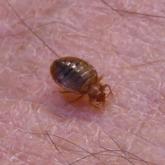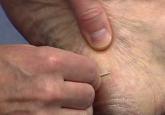Article

What’s Eating You? Bedbugs
- Author:
- Jay Chittoor, BS
- Bart D. Wilkison, MD
- Brandon W. McNally, MD
Bedbugs are an increasing problem in the workplace. Employees must be educated on the signs of a bedbug infestation and take preventive measures...
Article
Skin Cancer in Military Pilots: A Special Population With Special Risk Factors
- Author:
- Bart D. Wilkison, MD
- Emily B. Wong, MD
Military pilots may be at greater risk for skin cancer, particularly melanoma. Military-specific studies are limited, but skin cancer rates in...
Article

How to Teach the Potassium Hydroxide Preparation: A Disappearing Clinical Art Form
- Author:
- Bart D. Wilkison, MD
- Leonard C. Sperling, MD
- Anne P. Spillane, MD
Using potassium hydroxide (KOH) preparations in the diagnosis of superficial fungal infections is a technique that has been handed down from...
